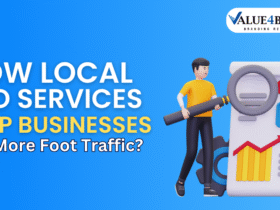What are the top social media platforms? Are you leveraging the top social media platforms where your audience actually spends time? Do certain platforms feel like a dead end for engagement and growth?
As we enter 2025, it’s crucial to align your business goals with platforms that work best for your brand. In this blog, we explore the evolving landscape of social media and how shifting trends impact the way entrepreneurs connect with their audiences. From algorithm changes and AI-driven tools to platform demographics, this post explores why certain platforms may underperform and how to identify the ones worth your time.
This updated guide provides insights on each platform’s demographics, benefits, and limitations to help you determine where your brand can thrive. You’ll find tips for crafting a social media strategy tailored to your unique goals and learn the common pitfalls that can hold back even the most seasoned users. Get ready to master the top social media platforms for building brand recognition, fostering community, and achieving business success in 2025.
Table of Contents:
Top Social Media Platforms in 2025
Here’s what’s really going on when a social media platform isn’t working for you
The Basic Social Media Platforms
Top 5 Social Media Platforms Every Entrepreneur Needs To Invest In
Why Instagram didn’t work for me
Top Social Media Platforms in 2025
It’s been a few years since I wrote this blog on my recommendations for the top social media platforms, but I’m back with a 2024 update.
A lot has changed.
Are these changes the result of the post-pandemic era and the major shift to working from home? Or perhaps it’s the rise of AI-powered tools and the use of social media management software? Maybe it’s a combination of all the above. But realistically, social media algorithms are constantly changing; sometimes, it’s for the worse.
Trends have a huge impact on these platforms, too. In the last year or so, there has been a shift towards more personalized experiences on social media sites like Instagram and TikTok. AI tools have played a significant part in this. The emergence of ChatGPT has influenced content creation and how audiences interact with posts on social media.
Before I really dive in, it’s important to note that everyone will have their own social media experience. How much time you dedicate to your brand’s social media marketing plays a huge factor in what works and what doesn’t.
I’ve spent years posting daily on Instagram for my personal brand business. I’ve researched and tweaked my hashtags, posted weekly IGTVs, and engaged for hours each week with my community.
And none of it worked for me.
This experience is really what led me to take another look at this blog. I love Instagram. It’s been my favorite platform for years. The fact that it didn’t seem to be working for me anymore led me to jump to all kinds of conclusions. So much so that I rebranded my entire account, created a second one, and boosted posts to see those coveted “likes” and follows.
If you’ve also felt the sting of Instagram’s unbalanced wrath and algorithm changes, I’m sure you can emphasize with these sentiments:
It’s not working.
Why is it working for them but not for me?
Maybe I’m doing something wrong.
I’m failing.
This is why social media can be so damaging (and why you need your own platform to thrive on). Not only does it undervalue all the work we put behind our business and our marketing, but it also poses a threat to our mental health.
RELATED: 10 SELF CARE TIPS FOR ENTREPRENEURS & SELF EMPLOYED
Here’s what’s really going on when a social media platform isn’t working for you
Trying to reconcile why your favorite social media platform isn’t working will not get you anywhere. Instead, you need to do some research, reanalyze your content strategy, and take action.
Before you outline your 2025 social media strategy, I want you to answer these questions:
- Which platforms do you post to consistently?
- Which content performs the best?
- What are the top social media platforms that your ideal client is using?
- How much time each day are you dedicating to being social/engaging?
The truth is, if you can’t answer these questions, you’re going to be blindly reaching for new clients without success. Here’s why a social media platform isn’t working for you:
- You haven’t found the right content that resonates with your ideal customer.
- You’re not spending enough time engaging without your ideal client.
- You’re on the wrong platform.
As it turns out, the third one was the culprit behind my marketing demise. While I still love Instagram and will continue to use it casually, I’m not going to focus my efforts there. I have to go where my ideal client is, and it’s not on Instagram.
I’ve updated this blog to not only reflect my own experiences and epiphanies but also to give insight into each platform’s changing algorithms. I included the primary demographics for each one so you can accurately determine if you’re on the right social media platform (and you don’t end up wasting your time like I did).
Are you ready to boost your personal brand recognition for 2025?
RELATED: HOW TO REBRAND YOURSELF – MY EXPERIENCE
The Basic Social Media Platforms
Social media is vital for entrepreneurs. There is no getting away from it if you want to be successful. But every month, a new platform seems to emerge, demanding to be used by anyone who wants to run a business.
From LinkedIn to Tik Tok, which ones are really the top five?
Before we get into that, I’m going to lay out all of your options and tell you why I think some platforms don’t work for entrepreneurs.
Snapchat
I’m going to be honest; I don’t think anyone recommends Snapchat for business endeavors. I personally never got into Snapchat, especially once Instagram introduced Stories as a direct competitor. Why space out your 24-hour content through multiple platforms if you’re already using Instagram?
I wanted to include Snapchat because it’s still one of the top 15 social media platforms as of 2024, with 750 million active monthly users.
While it’s not dominant among social media platforms, the app has embraced augmented reality (AR) for shopping experiences and virtual events, which can make it a valuable tool for niche businesses that are focused on immersive marketing.
Hootsuite offers a full guide on how you can use Snapchat for your business if you are interested. But here’s why I don’t recommend it for aspiring CEOs:
- It’s mainly for personal use (similar to using your personal Facebook account only with friends and family).
- 60% of US teens say they use Snapchat, which means most users don’t have purchasing power.
- It’s challenging to cross-promote your products and services.
Snapchat Demographics:
- 39% of 18–24 year olds use Snapchat
- 27% of those making less than $30k use Snapchat
- 29% of those with some college education use Snapchat
Tik Tok
Trust me, I fought with myself on where to place TikTok for business. There’s no denying that this social media app is on the rise, and there are even opportunities to monetize your efforts. TikTok has now surpassed more than 1 billion active monthly users.
You have probably heard a million reasons why you should start using TikTok for your business. People are eagerly jumping on the bandwagon because you can earn 10K followers overnight with one viral video. And the fact that there aren’t many entrepreneurs using this platform makes your chances of going “viral” pretty high.
However.
Tik Tok’s growing popularity is mainly due to the ease with which these vanity metrics come to its users. This app is banking off its demographics (67 percent of TikTok users are between 18 and 19). Its young users are still easily drawn in because of these coveted vanity metrics that make it appear as though you’ve “made it.”
As business owners, we know that these metrics mean next to nothing. We know that 10K TikTok followers and 5 million views on a video do not guarantee our business revenue. And while there are certainly success stories out there, I don’t think that there is enough strategy, intel, or features on TikTok to dedicate time and money to this app as a way to grow your business.
That being said, TikTok has evolved since its inception and is becoming a major player for businesses. The platform now offers more sophisticated advertising options, in-app shopping integrations, and significantly better analytical tools for creators and brands.
TikTok’s user base has also expanded and now includes older demographics. In 2022, 56 percent of users were between the ages of 20 and 29, and 45 percent were aged 30 to 39.
Additionally, TikTok now offers businesses the ability to have sponsored videos and use eCommerce features to sell products directly from the platform.
While this platform wasn’t a key platform in 2020, the app has significantly evolved over the last few years.
Tik Tok Demographics:
Pinterest was initially included in my top social media platforms to use in 2019.
You might be confused by this one, but Pinterest can be a great way to promote your business—if you’re in the right industry. Thanks to its product recommendations and direct shopping capabilities, Pinterest will be an effective platform for content creators in 2025, particularly for eCommerce.
Pinterest is an asset because it works more as a search engine (like Google) than a social media platform. People come here daily to get answers to questions and guidance on life events.
I often turn to Pinterest to find recipes, as well as style and home decor inspiration. You’ve probably used it to pin pictures of outfits that you like or home renovation ideas.
But that’s where Pinterest creates a problem for business owners. If you don’t have a regular blog or YouTube channel that you can lead Pinterest users to, you’re wasting your time. It wouldn’t even be worth creating Pinterest posts for your home decor or business coaching tips if all you’re going to do is lead them to your Instagram account.
At that point, you’re just making your ideal client go in circles. Sure, they might follow you, but where’s the incentive to buy?
Pinterest can work if you’re an influencer, blogger, or YouTuber. But if you’re a CPA, a business coach, or an app developer looking to sell your product or service, you need to first invest in blog or video content before Pinterest works for you.
Pinterest Demographics:
- 39% of 18–24 year olds use Pinterest
- 38% of those with more than college education use Pinterest
- 41% of those making more than $75k use Pinterest
We are finally here. We’re talking about the big ones— the best social media platforms. As an entrepreneur, I invest in multiple social apps because it’s the bread and butter for most business owners.
The fact that social media influencers are making an entire living off of these social media accounts is telling. There’s some debate about which are really the top social media platforms, but I think I’ve figured it out.
I want to reiterate this: Your target demographic will positively determine which social media platform works best for you. Keep this in mind as you consider these recommendations!
RELATED: WORKING FROM HOME? HERE ARE MY TOP 5 TECH SOLUTIONS
5. Facebook
Facebook is the site that these other top 5 social media platforms looked to define success. Besides Myspace (RIP), Facebook is the first platform whose primary usage is to connect friends and family socially. It ultimately changed the way we use the internet.
Facebook is still the number one performing social platform in terms of monthly use. Over 2.23 billion monthly active users open their Facebook app regularly. For some reason, Facebook holds the power of addiction, and people aren’t ashamed to admit it.
That said, after significant algorithm changes favoring more posts from friends and family over public content (including videos and other posts from publishers or businesses), Facebook only holds the 5th spot. This means that Facebook users are less likely to see your business account posts. Younger demographics usage has also continued to decline.
Advertising on Facebook, on the other hand, is a valuable tool for an entrepreneur to raise awareness. I have not found a better way to get in front of an interested audience than using Facebook marketing with its targeting abilities. That’s why I included Facebook in the top social media platforms for entrepreneurs. Facebook ads are a guaranteed way to generate leads.
In terms of Facebook Business pages and groups, I don’t think it’s going to be worth investing your time. The organic reach on Facebook is all but nonexistent and continues to steadily decline. If you’re using Instagram, I suggest pushing your posts to your Facebook account. You can schedule your weekly blogs or YouTube videos, but I would mostly focus your investment on Facebook ads.
Facebook Demographics:
- 29% of 25–30-year-olds use Facebook
- 74% of those making more than $75k use Facebook
- 269 million users are in India, 183 million users in the US, and 123 million users in Indonesia.
4. Instagram
Everyone is familiar with Instagram. Instagram has become the pinnacle when it comes to social media platforms for entrepreneurs and influencers. The app has pivoted to a creator-first platform with new features like AI-assisted content creation, interactive shopping experiences, and Reels monetization. These are key features for micro-influencers and those looking to utilize paid advertising. Niche communities can use these new features to engage with smaller, more loyal audiences.
And yet, I still couldn’t seem to find my ideal client on Instagram. By all measures, I was doing everything right: Regular posting, creating video content, promoting my blogs on Stories, daily engagement, engaging captions, and using Story stickers.
So why wasn’t it working for me?
There’s a couple of reasons. The first is that Instagram has become overly saturated in the entrepreneur industry. Coaches like me are a dime a dozen, which means that my competition is fierce. Unfortunately, this also means that it’s become difficult for users to determine who is genuine.
Anyone can brand themselves as an “expert” on Instagram. But it’s hard to prove your expertise on this photo-heavy platform. Aside from a few screenshots to use as social proof and fleeting captions or videos, you have to be on here constantly if you want to see a dent in your growth. And with 169 million users in the US in 2024, it’s become near impossible to stand out.
Even with blogs and a YouTube channel, Instagram’s design is more for aesthetics than a learning experience. And that’s what I’m there to do—teach business owners how to use their personal brand to make an impact (and to make sales).
Despite added features like Stories, IGTV, and Reels that have helped Instagram earn one of the top social media platforms’ spots, I still had one major factor holding me back.
Instagram demographics.
Why Instagram didn’t work for me
While the general salary and location of Instagram users matched my ideal client, the age bracket did not. I primarily work with established CEOs who are looking to branch out from their initial company. These people tend to be 28 years old and up. That’s less than half of Instagram’s daily users, with only 41% of 30–49 year-olds using Instagram.
This is why you need to continually pay attention to social media demographics and the algorithm changes.
The first five years I was using Instagram was a lot like how TikTok is now—easy to grow on and even easier to stand out as a business owner.
However, keeping in mind the ever-growing competition and the type of content people expect to see on this platform, it’s not the platform for my type of business anymore. If your primary content is to educate, you might be better off on somewhere like Twitter, YouTube, LinkedIn, or your own platform.
Instagram Demographics:
- 75% of 18–24-year-olds use Instagram
- 43% of those with more than college education use Instagram
- 42% of those making more than $75k use Instagram
RELATED: DEALING WITH IMPOSTER SYNDROME – PRACTICAL ADVICE FROM SOMEONE WHO’S BEEN THERE
3. X (Formerly Twitter)
Here’s another truth bomb—I’ve never liked Twitter.
So how did it end up on my list of top social media platforms?
Like most people, I initially favored social media apps depending on how well I performed on them. The more followers I have, the more successful the platform is, right?
As I said before, I’ve come a long way in realizing what “success” means on social media—and it isn’t follower count. The platform that provides you with the most engaged community and the most opportunities should be the platform you invest in the most.
Twitter is a bedrock of opportunities. Not only does it give you an easy place to share YouTube videos and blogs, but it’s the most accessible place to form a community of like-minded people.
Twitter users do not shy away from their opinions, making it easy to determine if someone is an ideal client. Twitter is also the go-to platform for journalists, giving you an easy “in.” If you want your name to show up in a high authority publication like Forbes, try finding one of their writers on Twitter and pitch them an idea about your industry. Chances are, if you’ve already been engaging with their content, they’ll be more willing to feature you in their next article.
Twitter Demographics:
- 39% of 25–34-year-olds use Twitter
- 31% of those making more than $75k use Twitter
- 32% of those with more than college education use Twitter
RELATED: HOW TO USE SOCIAL MEDIA TO BOOST YOUR CAREER
2. YouTube
You hear it all the time: video content is king.
YouTube is a mammoth of a platform for anyone digging into social media for entrepreneurs. YouTube is a video-sharing website that requires a basic knowledge of video editing to use it successfully. I have my own YouTube channel where I cover topics on how to fix your personal brand to scale your authority, influence, and trust.
Let me tell you firsthand that there is a bit of a learning curve when it comes to creating video content. Not only did I have to learn basic editing, but it’s also important to learn how to make “clickable” thumbnails, incorporate tags, and add graphics to the video. All of this took some time to learn, but honestly, it’s worth it.
Videos are becoming the norm for anyone producing content—and YouTube is the place to do it. It’s more personable than a written blog post, and your audience is more likely to pay attention to a video. And unlike short-form videos like Reels or Tik Toks, your audience can easily remember you and your expert advice. And it’s searchable content. That being said, YouTube introduced Shorts, embracing the short-form video content in competition with TikTok and Instagram Reels.
This means that YouTube users need to understand SEO. Content that is search engine optimized helps users who type keywords into Google or YouTube find their answers. With the right keywords, your YouTube video can show up on Google’s front page and stay there. This eliminates the need to depend on ever-changing algorithms like Instagram and enables you to passively entice future ideal clients.
YouTube has proven to be an effective marketing tactic for anyone who wants to flourish as an expert and connect with their audience. There’s no question as to why YouTube is one of the top social media platforms for entrepreneurs. If there’s any place to prove your expertise and your stance as a thought leader, YouTube is the place to do it.
YouTube Demographics:
- 93% of 25–30-year-olds use YouTube
- 80% of those with more than college education use YouTube
- 83% of those making more than $75k use YouTube
1. LinkedIn
LinkedIn is known as the least social of all social networking sites. In fact, it wasn’t even meant to be a social platform.
So why is it my top social media platform for entrepreneurs?
LinkedIn is the number one place for business owners to find clients, investors, and professional connections. If you’re an entrepreneur and you’re not on LinkedIn, where have you been?
LinkedIn is a hunting ground for corporate businesses and small entrepreneurs alike to share ideologies and to network. As of 2024, LinkedIn has 310 million monthly users and is the 6th most popular social media platform for Americans. That’s a lot of opportunities just waiting to be discovered.
If you’re looking for professional connections or looking for business funding, this is the platform you want. The organic reach for LinkedIn in 2024 has also significantly improved compared to other platforms (probably because only 3 million LinkedIn users share content every week).
LinkedIn also hosts a bevy of features that most other social media platforms don’t possess. For example, you can type original blog posts that can be shared with any of your connections on the platform using LinkedIn Pulse. They also recently introduced native video posting, business profiles, and groups.
Users on this platform are there for the sole purpose of making connections for their business. If you’re looking to become a leading authority in your space, LinkedIn is undoubtedly the best social media platform for you and your business.
LinkedIn Demographics:
- 49% of those making more than $75k use LinkedIn
- 44% of 25–30 year olds use LinkedIn
- 51% of those with more than college education use LinkedIn
Conclusion
The top social media platforms for entrepreneurs are going to be different based on your industry. The top social apps for a brick and mortar coffee shop will be different from an established lawyer or author.
Here’s my advice to help you determine where you’ll thrive on social media:
- Figure out your ideal client
- List the social media platforms you’re currently using or are willing to use
- Look at their demographics
- Determine the type of content you want to post (educational, personal, inspirational, entertaining, user-generated content)
- Determine which platforms intersect with your ideal client demographics and the type of content you want to post
So if you’re a CPA who wants to educate people on Profit and Loss sheets and simultaneously pick up clients, then you probably want to invest in LinkedIn and YouTube over Instagram. But if you own an online shop that sells beauty products, Instagram and Pinterest’s aesthetics are going to boost your sales significantly more than YouTube or Facebook. On the other hand, if you’re looking to franchise, expand, or get investment for your beauty shop, then you, as the CEO, need to be on platforms like LinkedIn and Twitter to form connections to help you succeed.















